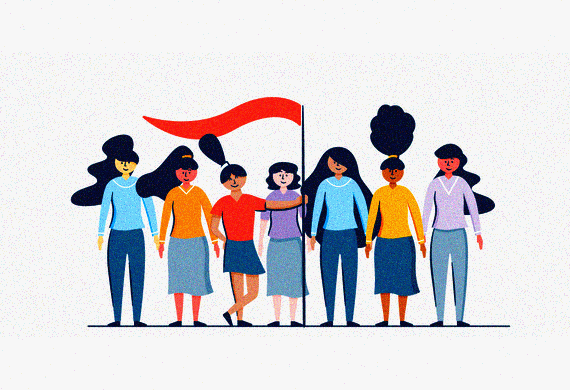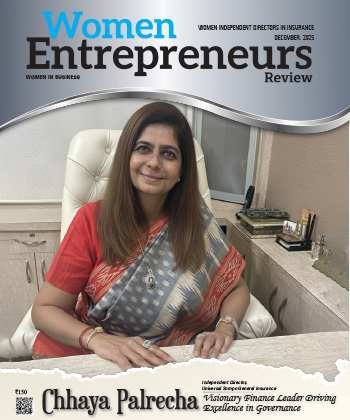
How Women Led SMEs Can Drive Positive Economic Impact in India
By: WE STAFF | Friday, 25 September 2020
Have you ever deeply wondered, what is the kind of role that small businesses are playing in a nation’s economy & employment ecosystem, and how much important it is? Let me explain it to you. In every economy, small businesses are like tiny bricks which help a building to stand strong but all that someone can see from the outside is the stylish or elegant design (big corporations) that attracts people’s attention. This happens worldwide and the same is the scenario in India as well. It is confirmed that 65 to 75 percent of the innovation in India come from the industry of small business. Especially from the businesses that are headed by women entrepreneurs. Let’s learn about the vital role women-led small businesses play in our economy.
The Small to Medium Enterprise (SME) scale industries are playing an important role in the GDP of India. It has nearly 40 percent of share in the total industrial output and 35 percent share in exports. The sector, according to this FICCI report, has been creating roughly 11.10 crore jobs across the country (National Sample Survey 2015-16). This sector is rightly known as India’s ‘engine of growth’ and consequently, taking an SME loan or availing SME funding has become easier over the years. Despite a glaring lack of infrastructure and various government policies of the past that discouraged people from starting their own businesses, the country has witnessed a remarkable growth in this sector. However, along with the nation’s growth, enhancing economic opportunity for women is also critical to reducing feminized poverty, augmenting inclusive growth, and enhancing the welfare of their children.
According to a report by Bain & Company and Google, Indian women entrepreneurs are likely to create 150 to 170 million jobs that are over 25 percent of the new jobs required for the working-age population by 2030. Today India has 13.5 - 15.7 million women-owned enterprises currently in six leading segments. These businesses are around 20 percent of all businesses today. Also, according to the McKinsey Global Institute, closing the gender gap in the economic realm in India could add at least $700 billion to the GDP by 2025, with an increase of 18 percent. This is the kind of potential women-led businesses holds in the nation.
How are they driving changes?
Currently, the majority of women-owned ventures are single-person businesses wherein rural non-farm home-based business owners form the largest share of 38 percent followed by urban self-employed women entrepreneurs at 31 percent, who usually work from home said the report titled Women Entrepreneurship in India - Powering the Economy With Her. Farm-based business owners at 18 percent and small business owners at 14 percent employing less than 10 employees and contributing most to employment generation are other dominant segments. Overall, the women entrepreneurs in India provide direct employment to around 22 to 27 million people currently.
Contribution through industrial units: In an economy as enormous as India, 95 percent of the industrial units in the country consist of small business and 40 percent of total industrial output is contributed by these small industries. Here, women-led enterprises plays an important role in for the nation. Again, small businesses bag a huge percent of exports from India.
Contribution through Labour-oriented business: Small business provides immense opportunities in the rural and semi-urban areas. The weight of the unemployment faced by the Indian economy can be lifted by women-led small businesses. Like any other economy having a large labour force, the Indian government also encourage the operations of small businesses to utilize the labour by drafting policies and establishing low loan interest rates.
Government’s Support
The importance of women entrepreneurship has also caught the government’s attention as it announced keeping 10 percent of the Small Industrial Development Bank of India’s (SIDBI) Rs 10,000 crore Fund of Funds (FFS) for startups reserve for women-led startups.
W2E2 - Wireless Women for Entrepreneurship and Empowerment (W2E2) is a programme designed to create women’s microlevel social enterprises based on Information and Communication Technology (ICT). The programme aims to help rural women with digital tools, e-learning, internet connection. The main objectives of this programme are to promote Internet-based social enterprises and entrepreneurship among women as change agents, use the Internet and ICT as a basis for gender inclusion in social and economic empowerment, and boost the women’s traditional skills, helping them reach markets and ensure sustainability. In the current day leveraging this programme some are setting up their own kiosks and shops to provide online services to the local community, while others have taken up work as digital literacy trainers in their own local communities.
GAME, a partnership platform to help increase mass entrepreneurship is aiming for the creation of 10 million entrepreneurs in India, of which at least 50 percent will be women, generating 50 million jobs by 2030. The key interventions suggested boosting women entrepreneurship include the need for entrepreneurial skills and mindset, financial support, and providing demand and market linkages.
National e-Governance Plan - The Plan provides opportunities to the rural women entrepreneurs for citizen-centric services including access to land records and utility bills payments. This plan helps them to follow up on rural enterprise, facilitate community participations, enable citizens to make informed decisions and act as a single window interface, eliminating the corruption process.
Conclusion
It is indeed a truth that women entrepreneurs are now playing a very important role in business, trade or industry. In certain businesses, women entrepreneurs are doing exceedingly well and even they have exceeded their male counterparts. Women are successful not only in law, science, medical, aeronautics and space exploration and even in police and military services, but now they are showing their might even in business and industry. They have proved that they are no less them men in the efficiency, hard work, or intelligence, provided they are given proper scope. In the coming decade, India will have the largest working-age population in the world with over one billion people. This community, when combined with an increasingly educated population, has the potential to transform India’s economic and social development. However, the private and government sector alone have not been sufficient in generating the required jobs. Entrepreneurship among women is a vital component of the overall solution. It not only boosts the economy through job creation but also delivers transformational social and personal outcomes for women.
Most Viewed
- 1 Women's Health Startup HerMD Closing Doors Amid Industry Challenges
- 2 5 Famous Women in Indian Armed Forces
- 3 Saudi Women No longer Require Male Permission for Clothing Choices, says Prince MbS
- 4 Kolkata Medtech Startup Innovodigm Raises Rs 5.5 Crore Seed Funding Led by IAN Group
- 5 Yamunanagar's Kashish Kalra Honoured after Securing 111th Rank in UPSC Civil Services Exam
- 6 Madurai Appoints Its First Woman Corporation Head
- 7 IAS Vijayalakshmi Bidari Appointed as the new Nagpur Divisional Commissioner
- 8 American Entrepreneur Lucy Guo Overtakes T Swift to become Youngest Female Billionaire
- 9 ICC Women's World Cup 2025 Trophy Showcased at Indore's Holkar Stadium
- 10 Aparna Saxena's Beauty Venture AntiNorm Launches in India
- 11 Vidya Nataraj Co-Founded BlueStone Jewellery & Lifestyle files IPO
- 12 5 Women Freedom Fighters of India
- 13 Dr. G Krishnapriya appointed as CEO for Trichy
- 14 M3M & Sirona Partner to Introduce Menstrual Hygiene Vending Machines in 15 Locations
- 15 Punjab Govt launches SHE Cohort 3.0 Supporting Tech-led Women Startups
- 16 Indian origin Lawyer, Sweena Pannu appointed as the US New Superior Court Judge
- 17 The Aurora Tech Award recognizes 4 Indian Women-led Startups
- 18 Kerala's Republic Day parade featured an all-female tableau
- 19 Manisha Kabbur Becomes Karnataka's First Woman International Karate Coach
- 20 Director K. S. Ravikumar's Daughter Maalica Ravikumar Launches Life Coaching Company 'Evergrowth Academy' for Women
- 21 Leezu's Raises Pre-Seed Funding to Accelerate Growth in Sexual Wellness Industry
- 22 Sattu: Super-easy summer drink for PCOS gut healing
- 23 Swathi Nelabhatla creates Sitha App, India's First Women-Exclusive Gig Platform
- 24 7 Timeless Female Kathak Dancers & their Iconic Legacies
- 25 Meet 7 Iconic Women Architects of Modern India & their Most Impactful Work
- 26 This Woman-led Insuretech Startup is Helping Bridge the Education Financing Gap in India
- 27 Women Leaders Share Lessons Learnt from India Women's WC Win
- 28 5 Enterprising Women Founders Powering Singapore's Tech & Innovation Landscape
- 29 4 Women. 4 Stories. One Vision for Smarter, Stronger Healthcare
- 30 Global Gender Gap Narrows to 68.8%, But Full Equality 123 Years Away: WEF Report 2025
- 31 Changemakers: 7 Women Entrepreneurs Taking the Make in India Movement Forward
- 32 Meet Lucy Guo, The Youngest Self-Made Female Billionaire Disrupting Tech
- 33 How Women are Driving India's Festive Online Shopping Surge






